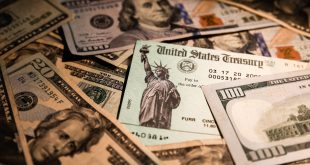The second half of the week is challenging for the US dollar to keep its ground. USD is impacted by disappointing US macroeconomic data releases. The major Wall Street indices trade in the red following the opening bell.
The US dollar struggles to keep its footing following Wednesday’s meager rebound. Although the currency managed to outperform its rivals during the European trading hours amid risk aversion, it faced renewed selling pressure following the disappointing macroeconomic data releases from the United States.
The US Dollar Index, which tracks the USD performance against a basket of six major currencies, stays below 102.00 after having tested that level twice in the last two trading days. On a weekly basis, the index clings to modest gains, looking to snap a five-week losing streak.
The US Department of Labour’s weekly publication revealed on Thursday that there were 245,000 Initial Jobless Claims in the week ending April 15, worse than the market forecast of 240,000.
Federal Reserve Bank of Philadelphia’s Manufacturing Index dropped to -31.3 in April from -23.2 in March. “The prices paid index declined for the second consecutive month, falling 15 points to 8.2,” the Philadelphia Fed’s publication read. “The current prices received index fell 11 points to -3.3, its third consecutive decline and first negative reading since May 2020”, the publication said.
Existing Home Sales in the US declined by 2.4% in March following February’s 13.8% increase. Wall Street’s main indexes opened in negative territory on Thursday with the tech-heavy Nasdaq Composite suffering heavy losses.
Stronger-than-anticipated Consumer Price Index (CPI) data from the UK early on Wednesday morning sparked a surge in global bond yields and rekindled concerns about persistent global inflation.
Prior to entering a consolidation phase on Thursday, the benchmark 10-year US Treasury note yield went north early on Wednesday and rose to its highest level in almost a month above 3.6%.
On Wednesday, the price of crude oil plunged substantially, with the West Texas Intermediate barrel losing more than 2%. WTI trades at its lowest price in more than two weeks below $78 as selling pressure persists.
Even while supply chains have continued to get better, manufacturing activity was commonly reported as flat or declining late Wednesday, according to the Federal Reserve’s Beige Book. The journal said, “Overall price levels increased moderately during this reporting period, though the rate of price increases appeared to be slowing.”
In an interview with American Public Media’s Marketplace on Wednesday, Chicago Federal Reserve Bank President Austan Goolsbee said, “I’m waiting to see whether there are other credit shoes to drop after the failure of two large regional Fed banks last month roiled the financial sector.”
John Williams, president of the New York Fed, reaffirmed that it is still too early to determine how tighter lending conditions will affect the economy and said that they must continue to use policy instruments to restore price stability.
In the absence of discernible progress on inflation, interest rates will need to keep rising, according to James Bullard, president of the St. Louis Federal Reserve, who spoke to Reuters on Tuesday. Bullard stated that he still views the 5.50%–5.75% range as the “adequately restrictive policy rate” and that he is biassed to keep rates there for longer until inflation is under control.
Following a monthly gain of 7.3% (revised from 9.8%) in February, housing starts in the US decreased by 0.8% in March. Building Permits fell by 8.8% during the same time frame, falling short of market expectations of a 1.45% increase.
According to figures released by China on Tuesday, the second-largest economy in the world grew by an annualized rate of 4.5% in the first quarter, which was significantly higher than the 2.9% growth seen in the final quarter of 2022. Additionally, this reading was higher than analysts’ predicted 4% growth. Other data showed that, in contrast to analysts’ expectations of 7.4%, retail sales increased by 10.6% annually and industrial production increased by 3.9%.
Thomas Barkin, president of the Richmond Fed, stated on Monday that he wants to see more proof of inflation returning to target.
How are US stock markets and the US dollar related?
If the Federal Reserve starts a cycle of tightening monetary policy to combat increasing inflation, stock markets in the US are likely to turn bearish. Higher interest rates will make borrowing more expensive and have a negative impact on company investment. Investors are likely to avoid taking on high-risk, high-return positions in that circumstance. The US Dollar Index (DXY) should increase in response to risk aversion and tight monetary policy, while the broad S&P 500 Index should decrease, showing an inverse link.
Investors are likely to place bets on assets that are anticipated to generate better returns, such as shares of technology companies, during periods of monetary loosening via lower interest rates and quantitative easing to boost economic activity. The Nasdaq Composite, a technology-heavy index, is predicted to do better at this time than other major equity indices. On the other side, the declining demand for safe havens and the expanding money supply should cause the US Dollar Index to turn negative.

 Noor Trends News, Technical Analysis, Educational Tools and Recommendations
Noor Trends News, Technical Analysis, Educational Tools and Recommendations



